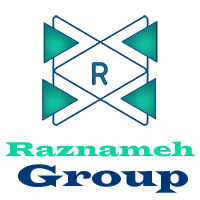Introduction to Content Planning
In today’s digital world, where content saturation is at an all-time high, strategic content planning has become more crucial than ever. According to recent studies, businesses that implement structured content planning see a 72% increase in overall marketing success compared to those that don’t. This comprehensive guide will help you navigate the complexities of modern content planning across various formats.
“The difference between good content and great content lies not in the writing or production, but in the planning.” – Ann Handley, Chief Content Officer at MarketingProfs
Join the Course Today: https://erp.raznameh.org/register-on-marketing-course
Explore the Course Topics: https://erp.raznameh.org/slides/the-sales-and-marketing-playbook-15
Importance of Strategic Content Planning
The impact of strategic content planning extends far beyond simple content creation. In a world where 7.5 million blog posts are published daily, and over 500 hours of video content are uploaded to YouTube every minute, standing out requires more than just quality content, it demands strategic foresight.
Recent research by the Content Marketing Institute reveals:
- Organizations with documented content strategies are 78% more successful
- Planned content generates 3x more leads than traditional outbound marketing
- Strategic content planning reduces marketing costs by 62% while generating 3x more leads
Understanding Your Audience: Demographics, Interests, and Pain Points
To create content that resonates and drives engagement, understanding your audience is key. Companies that exceed their revenue goals typically have a strong grasp of their audience personas. Research by HubSpot shows that 71% of successful companies document their audience’s characteristics. Here’s how to build a deep understanding of your audience:
1. Demographic Analysis
Start with the basic details of your audience to guide content creation:
- Age: Helps determine the language and style of your content.
- Location: Tailor content to regional preferences and needs.
- Income Brackets: Influences pricing, product offerings, and the tone of your content.
- Professional Background: Understand the industries and roles your audience occupies to provide relevant insights.
- Technology Preferences: Know the platforms, devices, and software your audience is using to create accessible content.
2. Psychographic Profiling
This delves deeper into their mindsets, motivations, and behaviors:
- Values and Beliefs: Understand what matters most to your audience to create content that resonates on a personal level.
- Lifestyle Choices: Helps in crafting content that aligns with their daily lives, routines, and goals.
- Content Consumption Habits: Recognize when and how they prefer to consume content (e.g., blog posts vs. videos).
- Decision-Making Factors: Identify what drives their purchasing decisions—whether it’s convenience, quality, or price.
3. Pain Point Mapping
Address the challenges your audience faces:
- Professional Challenges: Focus on the problems they encounter at work, such as time management, efficiency, or leadership.
- Information Gaps: What knowledge do they lack, and how can you fill those gaps with your content?
- Purchase Barriers: Understand what prevents them from making a purchase (e.g., price concerns, product doubts).
- Service Expectations: Anticipate the types of service and support they value, whether it’s fast delivery, customer support, or easy returns.
By analyzing these key areas—demographics, psychographics, and pain points—you can create highly targeted content that speaks directly to your audience’s needs and drives meaningful engagement.
Setting Clear Goals for Each Content Type
Effective content planning isn’t just about creating posts or videos; it’s about making sure your content supports both your marketing goals and broader business objectives. To ensure that content creation delivers measurable results, it’s crucial to have a structured approach. A widely recognized method for achieving this is the SMART goal framework, which can be specifically adapted for content creation. By implementing SMART, you ensure that your content goals are actionable, realistic, and aligned with your business vision.
1. SMART Goals Framework for Content
The SMART framework—Specific, Measurable, Achievable, Relevant, and Time-bound—is a proven tool for setting clear, trackable goals. When applied to content, it helps ensure that each goal is focused and delivers real results. Here’s a breakdown of each component:
- Specific: Clearly articulate what you aim to achieve with your content. For example, if your goal is to increase website traffic, specify the percentage growth you expect, such as a 20% increase over six months.
- Measurable: Define how you will measure success. For instance, use key performance indicators (KPIs) like the number of leads generated, website visits, blog shares, or social media engagement to track progress.
- Achievable: Ensure the goals you set are attainable given your resources, budget, and timeframe. For example, if you’re just starting, aiming for a 200% traffic increase may be too ambitious; instead, target a more manageable 20% increase with clear steps to get there.
- Relevant: Each goal must align with your broader business and marketing objectives. If your company’s priority is brand awareness, then setting a goal to create thought leadership content (e.g., blogs or videos) is more relevant than focusing solely on direct sales.
- Time-bound: Setting a clear timeline for achieving your goals helps build urgency and keeps your team on track. Whether you aim to achieve a goal in three months, six months, or a year, a deadline makes it measurable and actionable.
2. Content Goal Priority Distribution
Once you’ve developed your SMART content goals, it’s important to prioritize them based on your business’s needs. Prioritizing ensures that your content efforts cover all the necessary areas without neglecting important goals. Here’s an example of how you might divide your content goals to ensure balance:
- Brand Awareness and Thought Leadership (35%): Brand awareness is crucial for establishing credibility in the market. Allocate a significant portion of your efforts here. Content like blog posts, podcasts, case studies, and webinars work well to build trust and expand your reach. Thought leadership content positions your brand as an authority in your industry, which is vital for attracting new customers and clients.
- Lead Generation and Nurturing (30%): Content that nurtures and generates leads is fundamental to long-term business success. Use lead magnets, gated content, or email campaigns to capture new prospects and keep them engaged. These materials should gradually move leads through the sales funnel by providing them with more value and information at each stage of their buyer journey.
- Customer Education and Retention (20%): It’s essential to keep your current customers engaged and educated. Providing content that helps them make the most of your products or services—such as how-to guides, video tutorials, and customer success stories—helps reduce churn and creates a loyal customer base. This type of content also encourages repeat purchases or upsells.
- Direct Sales Support (15%): Content created for direct sales support helps push potential customers over the line. Examples include product demos, customer testimonials, or promotional offers that speak directly to your target audience’s pain points and convince them to take action. These materials are often more sales-focused, with a direct call to action aimed at converting prospects into customers.
By strategically distributing your content efforts across these four key areas, you create a well-rounded content strategy that addresses a wide range of business needs. This ensures that your content isn’t just scattered or unfocused but is instead aligned with both your short-term marketing objectives and long-term business goals. Balancing content goals also ensures that you stay responsive to evolving market demands, supporting consistent growth and sustainability.
Content Types Overview
The modern content landscape is diverse and constantly evolving. Understanding how to leverage different content types effectively can make the difference between content that performs and content that transforms your business results. According to Forrester Research, companies that diversify their content types see a 50% higher engagement rate than those focusing on a single format.
Blog Posts: Informational, Educational, and SEO-Friendly Content
Blogging is a fundamental element of content marketing, helping companies increase their online presence and attract new traffic. In fact, businesses that maintain active blogs receive 97% more links to their websites, showing the power of consistent, high-quality content. But creating effective blog posts requires more than just writing—it involves crafting content that is both valuable to readers and optimized for search engines.
Best Practices for Blog Content
To maximize the effectiveness of your blog posts, it’s important to follow some best practices that ensure your content ranks well while delivering value to your readers.
- Conduct Comprehensive Keyword Research: The first step in creating SEO-optimized content is identifying the right keywords. Researching keywords allows you to understand the language your audience uses and the questions they’re asking. By targeting both high-volume and long-tail keywords, you can ensure that your content reaches a wider audience. Tools like Google Keyword Planner, Ahrefs, or SEMrush can help you identify keywords that are relevant to your niche, ensuring your blog posts are discoverable.
- Structure Content with Clear Headers and Subheaders: Readability is crucial for user engagement. Well-structured content, with clear headings and subheadings, allows readers to easily scan and find what they’re looking for. Properly using H1, H2, H3, and H4 tags improves SEO and helps search engines understand the organization of your content. It also enhances user experience by making your blog more digestible.
For example:- H1: Main blog title
- H2: Major sections (Primary keywords included)
- H3/H4: Detailed subsections (Include secondary keywords and natural language)
- Include Relevant Statistics and Research: Integrating data, statistics, and case studies within your blog posts not only improves credibility but also helps substantiate your claims. Readers are more likely to trust content backed by evidence, which can make your blog posts more persuasive and authoritative. Additionally, referencing reputable sources helps to increase your content’s perceived value and encourages other content creators to link to your blog.
- Optimize for Featured Snippets: Featured snippets are one of the best ways to increase your content’s visibility on search engines. They appear at the top of search results and answer common questions directly. To optimize for featured snippets, structure your content in a way that answers user queries concisely and clearly. This can include:
- Providing direct answers to commonly asked questions
- Using bullet points or numbered lists for easy scanning
- Adding short paragraphs or concise sentences for clarity
- By anticipating the type of content users are looking for and delivering it in a format suitable for snippets, you increase the chances of your blog post being featured.
- Use Internal Linking Strategically: Internal linking plays a vital role in SEO. By linking to other relevant content within your site, you can help readers discover more valuable resources. This also helps with SEO by spreading link equity across your site and reinforcing the relevance of your other pages. For instance, if your current blog post mentions a particular concept, link to a previous post where you explored that topic in greater depth. This not only keeps your readers engaged longer but also signals to search engines that your site has interconnected, authoritative content.
“The best blog posts don’t just inform—they transform the reader’s understanding of a topic.” – Brian Dean, Founder of Backlinko
By integrating these best practices into your blogging strategy, you can create content that not only drives traffic and boosts SEO rankings but also provides real value to your audience, turning casual readers into loyal followers.
Videos: Visual Storytelling and Engagement Opportunities
Video content has emerged as the most engaging content format, with 84% of consumers reporting that they’ve been convinced to buy a product or service by watching a brand’s video. The key to successful video content lies in understanding platform-specific requirements and audience preferences.
1. Key Ingredients for an Irresistible Video
The Magic of the First Few Seconds
Imagine you’re at a party and someone approaches you with a mundane, unexciting introduction. What happens? You quickly zone out. The same thing happens with videos. Your opening matters most. If you don’t hook the viewer within the first 3-5 seconds, chances are, they’ll move on to something else. This first impression needs to capture their attention immediately. Whether it’s through humor, surprise, or a bold statement, make sure to draw them in instantly.
To perfect this, consider these strategies:
- Start with a powerful question or statement.
- Use a visually striking image or quick movement.
- Introduce a unique or controversial element that sparks curiosity.
Pitch Your Value Proposition Fast
People’s attention spans are shrinking by the second. Within the first 10 seconds, your audience should have a clear understanding of what they’re going to get from the video. Be direct and clear. If you’re showcasing a product, demonstrate its benefit right away. If it’s an educational video, highlight what the viewer will learn. This doesn’t mean skipping the hook, but rather following up quickly with the why—the reason they should keep watching.
For example:
- If you’re selling a service, show the problem it solves immediately.
- If it’s a tutorial, give a preview of the outcome early on.
Tell a Story, Don’t Just Inform
Human brains are wired to respond to stories. If your video merely provides information or facts, it’s likely to get lost in the noise of the internet. Stories engage people and create an emotional connection, making your content more memorable and shareable. Think of your video like a mini-movie—create a narrative that resonates with your audience.
Here are ways to make your video more narrative-driven:
- Share customer success stories or case studies.
- Illustrate a problem-solution scenario that speaks to your audience’s needs.
- Use a testimonial or behind-the-scenes footage to humanize your brand.
Quality Over Everything
In the age of HD, 4K, and crisp sound, low-quality video simply doesn’t cut it. The production value of your video sends a message about your brand. Bad lighting, poor audio, or shaky camera work can create an impression that your business lacks professionalism. Invest in the right equipment to ensure your video is clear, visually appealing, and sounds crisp. If you can’t afford high-end cameras, make sure to optimize your smartphone or camera for the best possible quality.
Elements to keep in mind:
- Lighting: Use soft, diffused light to avoid harsh shadows.
- Sound: Invest in a lapel mic or external mic for clearer audio.
- Stability: Use a tripod or gimbal to avoid shaky footage.
Platform-Specific Content
Each platform has its own set of preferences and rules. Whether it’s YouTube, Instagram, TikTok, or Facebook, each platform has different video lengths, formats, and audience behaviors. Tailor your content to fit the platform for maximum engagement. A 10-minute YouTube video would flop on TikTok, where 60-second clips rule the scene. The more aligned your content is with the platform, the better it will perform.
Here’s how to tailor your content:
- For Instagram Stories, go with fast-paced, engaging content.
- For YouTube, you can afford longer videos with more depth.
- On TikTok, focus on highly engaging, short-form videos that get straight to the point.
2. Metrics: How to Know If Your Video Is a Hit
Videos aren’t just about views—they’re about the impact they create. To determine if your video has succeeded, you need to look at the right success metrics. These will not only guide you on how well your video is performing but will also help you understand your audience’s preferences and engagement levels.
View Duration: The Retention Test
Watch time is one of the most important metrics to evaluate the success of your video. Are people staying till the end or dropping off early? Your goal should be to keep viewers engaged throughout the entire video. Aim for a 50%+ completion rate. If you’re consistently seeing more than 50% of your audience watching until the end, then your content is hitting the mark.
However, if your drop-off rates are high, it might signal:
- A weak opening hook
- Overly long content
- Too much filler
Engagement Rate: Getting Interactive
Views are great, but engagement is even better. Interaction signals that your video is sparking conversations and interest. Engagement metrics include likes, comments, shares, and even reactions on platforms like Facebook. If your video has an engagement rate above 3%, then it’s safe to say that your content is resonating well with your audience.
To increase engagement:
- Ask questions in your videos to encourage comments.
- Add a call-to-action (CTA) prompting viewers to like, share, or comment.
- Hold giveaways or interactive polls to boost participation.
Conversion Rate: Turning Viewers Into Customers
What’s the ultimate goal of your video content? To drive action. Whether it’s signing up for a newsletter, purchasing a product, or following your brand, videos should guide viewers to the next step. For conversion-focused content, aim for a 1-2% CTR (click-through rate). This tells you that viewers are interested enough in what you’re offering to take the next step.
How to improve conversions:
- Add a direct and clear CTA at the end of the video.
- Use annotations or links in the video description to direct users to landing pages.
- Ensure your video highlights the value of the action you want viewers to take.
Video marketing is a creative powerhouse—but only if executed strategically. From capturing attention with a killer hook to optimizing content for each platform and tracking key metrics, your video strategy should be as dynamic as the content you create
Social Media Posts: Quick, Relatable, and Highly Shareable Content
In today’s fast-paced social media landscape, content needs to grab attention instantly. It’s not just about being present—it’s about creating scroll-stopping content that encourages engagement, shares, and interaction. Studies from Sprout Social show that brands with a consistent, platform-optimized strategy can experience 57% higher engagement rates. But what works on one platform might fall flat on another, so understanding the nuances of each social network is key to maximizing your reach.
1. Platform-Specific Success Factors
Each social platform has its own strengths and audience preferences. To succeed, your content should be optimized for these unique characteristics, ensuring it resonates with users on each platform.
- LinkedIn: Long-Form Professional Content
LinkedIn is the go-to platform for professionals, so your content should reflect that. Long-form posts between 1,500-2,000 characters typically perform best, allowing you to dive deeper into topics like industry trends, career insights, and thought leadership. Posts that offer actionable insights or advice tend to foster high engagement from a more professional, career-focused audience. Make sure to share original research, case studies, or meaningful anecdotes to capture interest. - Instagram: Visual Storytelling with Carousel Posts
Instagram thrives on visual storytelling, but lately, carousel posts—where users can swipe through multiple images or videos—are proving especially effective. Carousel posts have been shown to deliver 3x higher engagement than static images. Whether showcasing a product’s different features, highlighting a step-by-step tutorial, or sharing behind-the-scenes moments, this format encourages users to spend more time on your post, thus boosting engagement. - Twitter: Concise Messaging with Videos
With its 280-character limit, Twitter demands concise, sharp messaging. However, tweets that include videos see 71% higher engagement, making video content a must for brands looking to stand out. From quick demos to behind-the-scenes snippets, video content is highly shareable and allows you to communicate more in less time. Don’t forget to use trending hashtags and join relevant conversations to increase visibility. - Facebook: Community-Focused Content
Facebook continues to thrive on community-driven content. Posts that foster interaction within groups or invite users to participate in discussions generate 2x more interactions compared to standard posts. Polls, live videos, and personal stories that encourage dialogue within your community can significantly boost engagement. Facebook users are looking for content that helps them connect, so focus on creating an inviting, inclusive atmosphere in your posts.
2. Crafting Conversations That Convert
Unlike traditional media, social media is all about creating two-way conversations. As Mari Smith, a well-known social media expert, puts it: “Social media is not just about broadcasting—it’s about creating conversations that convert.” This means you should focus on:
- engaging your audience by asking questions
- encouraging comments
- responding thoughtfully.
Use social listening tools to track what your audience is talking about and jump into trending conversations when relevant.
3. Measuring Social Success
To refine your social media strategy, it’s crucial to monitor key metrics across platforms. Here’s what to keep an eye on:
- Engagement Rate: This includes likes, shares, comments, and retweets. A higher engagement rate typically indicates that your content is resonating with your audience.
- Reach and Impressions: These metrics show how many people are seeing your posts and how often. High impressions with low engagement could mean it’s time to rethink your content strategy.
- Click-Through Rate (CTR): If your goal is to drive traffic to a website or landing page, monitor the CTR to understand how effectively your social posts are encouraging action.
- Follower Growth: Steady growth in followers suggests your content is attracting new viewers, while a decline might indicate the need for a fresh approach.
To thrive on social media, your content must be quick, relatable, and optimized for each platform’s unique audience. Whether you’re crafting in-depth posts for LinkedIn, visual stories for Instagram, or concise tweets with videos on Twitter, the goal is to foster conversations that lead to conversions.
By combining platform-specific best practices with a consistent, engaging voice, your brand can turn social media posts into powerful tools for connection and growth.
Research and Ideation Phase
The research and ideation phase serves as the foundation for content that truly resonates with your audience. Studies show that content backed by research performs 2.4x better than purely opinion-based content.
Conducting Market and Competitor Research
Effective market research is a cornerstone of any successful content strategy, enabling you to understand your audience, spot industry trends, and outperform competitors. As highlighted in Semrush’s State of Content Marketing Report, companies that regularly perform competitor analysis are 63% more likely to surpass their content marketing goals. Research ensures your content remains relevant, targeted, and able to engage your audience effectively.
1. Essential Research Components
To fully capitalize on the benefits of market and competitor research, you must cover several critical areas. These components will give you a well-rounded understanding of the content landscape and reveal opportunities for growth.
- Competitor Content Analysis
Analyzing what your competitors are doing is vital for finding content opportunities and staying ahead. Key factors to consider include:
- Content Types and Formats: What kind of content are competitors producing? Are they focusing on blog posts, videos, infographics, or something else? Understanding the formats they prioritize can help you spot trends or gaps in the market.
- Publishing Frequency: How often do they publish new content? Identifying publishing patterns can help you plan your content calendar to stay competitive.
- Engagement Metrics: Study how their audience interacts with content. Look at likes, shares, comments, and overall engagement. This can provide insight into what resonates most with the target market.
- Topic Coverage: What topics are they focusing on? Are there any areas they aren’t covering that could provide a gap for you to fill with fresh insights or angles?
- Content Gaps: By analyzing where competitors may fall short—whether it’s missing industry trends or underexplored customer pain points—you can create content that better addresses audience needs.
- Audience Research
Understanding your audience is critical for content that truly resonates. Leverage a range of tools and techniques to get deeper insights:
- Search Intent Analysis: What is your audience searching for? By mapping out their search queries, you can create content tailored to their needs at various stages of the buyer journey.
- Social Listening Data: By monitoring conversations on social media, you can tap into real-time insights about what your audience cares about. This data helps inform timely and relevant content creation.
- Customer Feedback: Direct feedback from your current or potential customers is invaluable. Surveys, reviews, and customer service interactions can reveal insights into what matters most to your audience.
- Industry Trends: Keep an eye on evolving industry trends. By staying current, you can produce content that aligns with the latest developments and positions your brand as a thought leader.
2. Research Impact on Content Success
Market and competitor research isn’t just about collecting data—it’s about translating that data into actionable content insights that improve performance. Here’s how effective research can impact your content outcomes:
- 72% Higher Engagement Rates
Content that’s crafted based on solid audience insights is far more likely to capture attention and foster engagement. Understanding what your audience truly wants ensures your content strikes the right chords. - 45% Better Conversion Rates
When you know your audience’s pain points and interests, you can create more targeted calls-to-action (CTAs) that drive conversions. Competitor research also helps identify the types of content that are proven to convert. - 83% Improved Content Relevance
Research allows you to align your content more closely with your audience’s current needs and expectations. Regular analysis ensures that your content remains relevant in an ever-changing market. - 67% Increased Audience Retention
When your content consistently meets audience expectations, they’re more likely to stay engaged with your brand over the long term. Retaining their attention through relevant, high-quality content keeps them coming back for more.
Conducting comprehensive market and competitor research is key to crafting a winning content strategy. By regularly analyzing your competitors, understanding your audience, and keeping up with industry trends, you’ll be better positioned to create content that resonates, engages, and drives results.
Identifying Content Gaps in Your Industry
Content gap analysis has evolved into a critical component of any successful content marketing strategy. By identifying and addressing gaps in your content, you can fill unmet audience needs and capitalize on untapped opportunities. According to Ahrefs, targeting content gaps can lead to 3x higher organic traffic growth—a significant boost for brands aiming to outperform competitors and meet audience demand more effectively.
1. Systematic Gap Analysis Process
To conduct a comprehensive content gap analysis, you need to approach it methodically. A well-executed gap analysis process can reveal missed opportunities, identify areas for improvement, and align your content with audience expectations. Here’s a step-by-step breakdown:
- Keyword Opportunity Identification
Begin by analyzing the keywords your competitors rank for, which you may not be targeting. This helps you identify opportunities to create content around keywords that have high search volume but lower competition. By focusing on these, you can capture new traffic and provide content that fills a void in search results. - Competitor Content Mapping
Map out the topics your competitors are covering comprehensively. By understanding what they publish and where their strengths lie, you can spot areas they might be neglecting. Focus on those underserved topics to provide fresh insights or innovative angles that appeal to your audience. - Search Intent Analysis
Ensure your content matches the actual search intent behind queries. Are users looking for in-depth guides, quick answers, or visual content? Analyze the type of content that aligns with your target keywords and audience needs. Mismatched intent can cause your content to underperform, even if it ranks well. - Format Diversity Assessment
Different audiences prefer different content formats, such as blog posts, videos, infographics, or podcasts. Evaluate whether your competitors are offering a diverse range of formats and consider expanding your content formats to cater to varying preferences. This approach allows you to serve content in ways that resonate most with your audience. - Quality Comparison
Simply identifying content gaps isn’t enough; you must also ensure your content outperforms what’s already available. Compare the quality of your competitors’ content in terms of depth, accuracy, and usefulness. Aim to produce higher-quality, more authoritative content that delivers more value than what users currently find elsewhere.
Why Content Gap Analysis Matters?
Andy Crestodina, CMO of Orbit Media, perfectly encapsulates the essence of content gap analysis:
“The biggest opportunities often lie in the gaps between what competitors are creating and what your audience actually needs.”
When you align your content strategy with the gaps in the market, you provide unique value that others aren’t addressing. Here’s why this matters:
- Improved Relevance and Authority
By targeting content gaps, you ensure your content is highly relevant to your audience’s needs, which can significantly improve both engagement and authority. When users find content that directly answers their questions or solves their problems, they are more likely to view your brand as a trusted resource. - Increased Organic Traffic
Filling content gaps allows you to tap into keyword opportunities your competitors may have missed, leading to higher rankings in search engine results pages (SERPs). By strategically addressing these gaps, you can drive substantial organic traffic to your site without the need for expensive advertising. - Enhanced User Experience
When your content better meets user expectations, it leads to a more satisfying experience for your audience. Whether you’re addressing under-explored topics, optimizing content formats, or improving quality, a content gap analysis helps you deliver content that keeps your audience coming back for more. - Higher Engagement and Social Shares
When your content addresses unique gaps in the market, it naturally sparks greater interest from your audience. Content that offers fresh insights or solves specific problems is more likely to be shared on social media, driving higher engagement rates.
Conducting a systematic content gap analysis is one of the most powerful ways to unlock new growth opportunities in your content strategy. By identifying keyword gaps, analyzing competitor content, matching search intent, and delivering diverse and high-quality content, you can ensure your content fills unmet needs in your niche.
Brainstorming Ideas for Each Content Type
Modern brainstorming in content creation requires a structured approach that blends creativity with data-driven insights. Companies that use systematic ideation processes report 56% higher content success rates. By combining strategic thinking with creativity, you can create impactful content that meets both audience and business goals.
1. The 4D Ideation Framework
- Discover: Research trends, audience needs, and competitor content. Use tools like keyword research, social listening, and customer feedback to identify gaps and opportunities for new content ideas.
- Define: Set clear, specific content objectives aligned with your business goals. Whether it’s boosting brand awareness, lead generation, or increasing engagement, defining your focus ensures that all ideas have a purpose.
- Develop: Generate content ideas through brainstorming techniques like mind mapping or collaborative sessions. Make sure your ideas align with both your goals and audience insights, whether it’s blog posts, videos, or infographics.
- Deliver: Plan the execution by scheduling deadlines, assigning responsibilities, and choosing the right distribution channels. Ensure that your content reaches the right audience through platforms like social media, email, or influencers.
2. Enhancing the Framework
- Test and Optimize: Monitor performance using metrics like traffic and engagement. Use A/B testing to refine content elements such as headlines or calls to action based on what works best.
- Iterate and Innovate: Regularly review and update your ideation process. Explore new tools, formats, and trends to ensure your strategy remains relevant and effective.
3. Beyond Traditional Brainstorming
- Incorporate Team Collaboration: Effective ideation is not a solo activity. Involve team members from different departments, such as marketing, sales, and product development. Diverse perspectives bring new ideas to the table, ensuring that your content covers a range of customer pain points and solutions. Cross-departmental collaboration can also help uncover new content formats, distribution channels, or audience segments that you hadn’t considered.
- Integrate Data-Driven Insights: While creativity is essential, don’t overlook the power of data. Use analytics to guide your ideation process. Look at past content performance, audience demographics, and behavior to identify patterns and opportunities. Data can reveal gaps in your content strategy, point to high-performing formats, and help you tailor your content more effectively to your target audience.
By applying the 4D Ideation Framework and enhancing it with collaboration and data, you ensure a balanced content strategy that drives engagement and business success.
Using Tools for Content Ideas
Contemporary content planning has evolved to integrate a robust suite of digital tools, making it more data-driven and efficient than ever before. Organizations that utilize a combination of these tools experience significantly better results, with a recent survey revealing that companies leveraging at least three content research tools achieve 41% higher success rates. This combination of technology and strategy enables brands to stay ahead in an increasingly competitive content landscape.
1. Key Tool Categories for Effective Content Planning
- SEO Research Tools: SEO remains a cornerstone of digital content strategy. Tools like Semrush, Ahrefs, and Moz are essential for discovering keyword opportunities, understanding search volume, and analyzing backlinks. These platforms provide insights into your competitors’ SEO strategies, helping you fine-tune your content to outperform them. Additionally, they allow you to track ranking changes over time, enabling continuous optimization of your content.
- Key Benefits:
- Identify high-performing keywords that align with your audience’s search behavior.
- Optimize existing content to improve its search ranking.
- Uncover gaps in competitor strategies that you can exploit for higher visibility.
- Key Benefits:
- Social Listening Platforms: Understanding how your audience perceives your brand and what they are discussing in real-time is critical for shaping effective content. Tools like Brandwatch, Mention, and Hootsuite allow you to monitor conversations across social media channels, blogs, and forums. This helps brands track sentiment, respond to customer concerns, and leverage trending topics to create timely, relevant content.
- Key Benefits:
- Stay informed on what your audience is talking about and what matters to them.
- Track brand sentiment to address potential issues or capitalize on positive feedback.
- Discover emerging trends that can inform your content calendar.
- Key Benefits:
- Content Analysis Tools: Content analysis tools are vital for measuring how well your content performs and understanding what types of content generate the most engagement. BuzzSumo and ContentStudio are popular tools that help identify high-performing articles, social media posts, and other types of content. They also provide competitive insights, helping you determine which formats and topics work best within your niche.
- Key Benefits:
- Evaluate which content formats drive the most traffic and engagement.
- Uncover which topics or themes are resonating most with your target audience.
- Perform competitor analysis to see what’s working for other brands in your industry.
- Key Benefits:
- Trend Monitoring Tools: Staying current with industry trends is crucial for maintaining relevance and capitalizing on content opportunities. Tools like Google Trends and Exploding Topics allow you to monitor emerging topics and predict shifts in audience interest. By keeping an eye on trending searches and themes, you can align your content strategy with what’s popular right now, boosting your chances of getting noticed.
- Key Benefits:
- Spot early trends that can give your content a first-mover advantage.
- Analyze historical data to identify cyclical trends or seasonal content opportunities.
- Adjust your content planning based on real-time data on audience preferences.
- Key Benefits:
The true power of these tools comes from integrating them into a unified content strategy. By leveraging insights from SEO research, social listening, content analysis, and trend monitoring, brands can ensure their content is both highly relevant and optimized for performance.
This combination enables companies to craft data-driven, strategic content plans that not only engage audiences but also support broader business goals, from lead generation to customer retention.
Setting Clear Objectives and KPIs
Success in content marketing requires more than just tools—it demands a clear strategy backed by well-defined objectives and measurable outcomes. Research shows that organizations with documented Key Performance Indicators (KPIs) are 2.7 times more likely to achieve their content goals. Here’s how you can structure your content objectives and track progress:
- Define SMART Goals: Ensure your content goals are Specific, Measurable, Achievable, Relevant, and Time-bound. For example, a goal like “Increase blog traffic by 30% within the next quarter” is more actionable and trackable than vague aspirations like “grow the audience.”
- Monitor Key Metrics: Regularly assess the effectiveness of your content through key metrics such as website traffic, conversion rates, engagement, and social shares. Set benchmarks for these metrics to track progress toward your objectives.
- Use Data for Continuous Improvement: Leverage data insights to refine your strategy. Content performance should be continually evaluated, and tools can help pinpoint what works and where improvements are needed, whether it’s adjusting keyword targeting or experimenting with different formats.
- Align Content with Business Goals: Your content should always reflect broader business objectives, whether it’s driving brand awareness, generating leads, or boosting sales. Ensure every piece of content serves a clear purpose that ties back to your KPIs.
Defining Objectives for Each Content Type
Every type of content has its strengths, and it’s vital to set specific goals tailored to each format to harness those strengths effectively. Here’s how to define clear objectives for your core content types:
- Blog Posts
- Primary Objective: Drive organic traffic through SEO-rich content. Blog posts are a key channel for pulling in visitors through search engines, making them a cornerstone of any long-term inbound strategy.
- Secondary Objective: Establish authority in your industry by creating informative, well-researched articles that build trust and showcase expertise.
- Tertiary Objective: Generate leads through strategically placed calls to action, converting readers into potential customers.
- Example: A well-optimized article on “How to Implement Email Marketing for E-commerce” might aim to rank for keywords like “Email Marketing Tips” while offering a downloadable eBook as a lead magnet.
- Video Content
- Primary Objective: Increase brand awareness. Videos provide the perfect opportunity to connect emotionally with audiences, particularly through platforms like YouTube and social media.
- Secondary Objective: Boost engagement with comments, shares, and likes.
- Tertiary Objective: Educate the audience. Explainer videos or product demos serve the dual purpose of informing and marketing.
- Example: A brand video introducing your company’s story could reach a broad audience, while an instructional video might be geared more towards driving engagement and education.
- Social Media Posts
- Primary Objective: Foster community building by encouraging interactions and nurturing long-term relationships with your followers.
- Secondary Objective: Increase brand visibility through shares and reach.
- Tertiary Objective: Offer real-time customer service by responding to inquiries, complaints, and compliments quickly.
- Example: Posting polls, interactive Q&A sessions, or behind-the-scenes content on Instagram can build community engagement, while customer service-focused posts on Twitter keep your audience engaged and supported.
Defining objectives at the outset allows you to craft content that directly serves your overarching goals. With a clear vision, you’ll ensure that every blog, video, or social post contributes meaningfully to your content strategy and business outcomes.
Establishing KPIs for Measuring Success
Measuring the success of your content marketing efforts is essential to ensuring that your strategy aligns with your business goals. KPIs (Key Performance Indicators) are vital for tracking progress and refining tactics. By monitoring specific KPIs for different content types, you can optimize performance and continuously improve results.
As Avinash Kaushik, Digital Marketing Evangelist, says:
“If you can’t measure it, you can’t improve it. Choose KPIs that directly tie to business outcomes.“
Here’s a breakdown of the essential KPIs for blog content, video content, and social media:
1. Blog Content Metrics
For blogs, key metrics revolve around audience engagement and content impact:
- Page Views and Unique Visitors: Track the overall traffic to each blog post to measure its reach and popularity.
- Time on Page: A strong indicator of content relevance and engagement. The benchmark is typically more than 3 minutes spent per blog post.
- Bounce Rate: This shows the percentage of visitors who leave after viewing only one page. The target is to keep this below 60%, signaling that users are exploring other content on your site.
- Conversion Rate: Measures how often blog visitors take a desired action (e.g., signing up for a newsletter). The industry average for blog conversions ranges from 2-5%.
- Social Shares and Backlinks: These indicate how much your content is resonating with readers and being shared or referenced elsewhere online.
Tip: Consider using scroll depth tracking and heatmaps to get a clearer idea of how readers are interacting with longer-form content, which can help improve blog layouts and readability.
2. Video Content Metrics
For video content, the focus shifts to engagement, retention, and how effectively the video drives action:
- View Duration: A completion rate over 50% signals that the content is holding viewers’ attention.
- Engagement Rate: Ideally above 3%, this KPI tracks likes, shares, and comments, showing how interactive the audience is with the video.
- Share Rate: At a 1.5% industry average, the share rate reflects how viral your content can become across social media platforms.
- Click-Through Rate (CTR): Videos with clear CTAs should aim for a CTR above 1%, indicating viewers are motivated to take the next step.
Tip: Use retention graphs to identify points where viewers drop off, and experiment with different formats (short vs. long videos) to determine what works best for your audience.
3. Social Media Metrics
Social media KPIs provide a window into how well your content is building a community and amplifying your brand message:
- Engagement Rate: This KPI is key for social media, measuring likes, comments, and shares. Engagement rate benchmarks vary by platform, but aiming for a strong engagement rate (e.g., 1-5% on Instagram) can signal content success.
- Reach and Impressions: Reach shows how many unique users see your content, while impressions measure the number of times it’s displayed. High reach and impressions signal good content visibility.
- Community Growth Rate: Whether it’s new followers or members, tracking growth over time helps measure the success of your social media presence.
- Response Rate and Time: Especially for brands using social media for customer service, these metrics track how quickly and effectively you respond to inquiries.
Tip: Consider sentiment analysis to measure the tone of your audience’s feedback, and track brand mentions to see how often your brand is organically integrated into larger discussions.
Ultimately, the KPIs you choose need to tie directly to your business goals, whether that’s driving revenue, improving engagement, or growing your community. KPIs not only show how well your content is performing but also highlight areas for refinement and growth.
By regularly reviewing these metrics and making adjustments based on the data, your content strategy becomes a dynamic tool that evolves to meet audience needs and market demands.
Tracking Metrics for Blog Posts, Videos, and Social Media Posts
Effective tracking requires both tools and processes. Companies with established tracking systems report 43% higher ROI on their content investments.
Implementation Framework:
- Set up tracking tools and analytics
- Establish reporting schedules
- Create performance dashboards
- Define action thresholds
- Implement feedback loops
Also, effective content performance tracking involves key metrics tailored to each content type:
For blog posts, monitor traffic sources, page views, unique visitors, bounce rate, time on page, conversion rate, and backlinks or social shares. These metrics help you understand where readers come from, how they engage with your content, and the authority it builds through shares.
For videos, focus on watch time, view duration, total views, audience engagement (likes, comments, shares), retention rates, and click-through rates (CTR). These provide insights into how long viewers stay engaged and whether they follow through on your calls to action.
For social media posts, track reach (unique views), engagement rate (likes, comments, shares), impressions, CTR, follower growth, and shares or mentions. These help gauge how well your content spreads and resonates with your audience.
Tracking your content’s performance is not just about looking at data but also about using it to inform future strategies. By consistently analyzing metrics and making informed adjustments, you can fine-tune your content marketing efforts to deliver even greater results.
Remember, metrics should serve as a guide to continuous improvement—adapt, iterate, and optimize your content based on real-time feedback.
Table of Content
- How to Plan for Different Types of Content/ Part 1
- How to Plan for Different Types of Content/ Part 2
- How to Plan for Different Types of Content/ Part 3
- How to Plan for Different Types of Content/ Part 4












